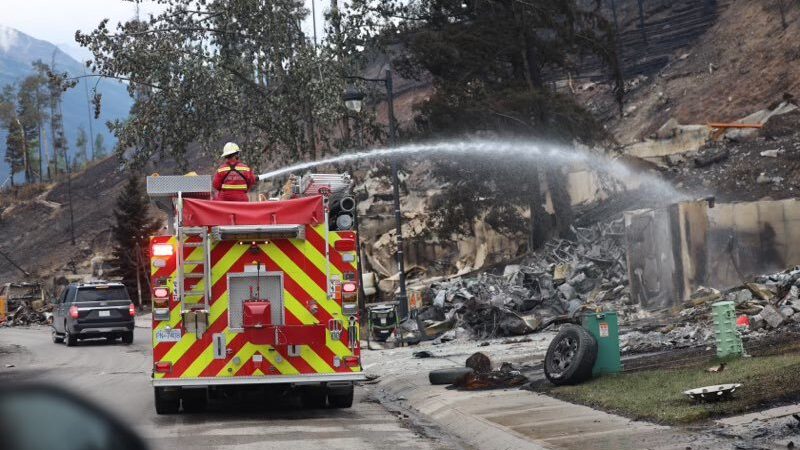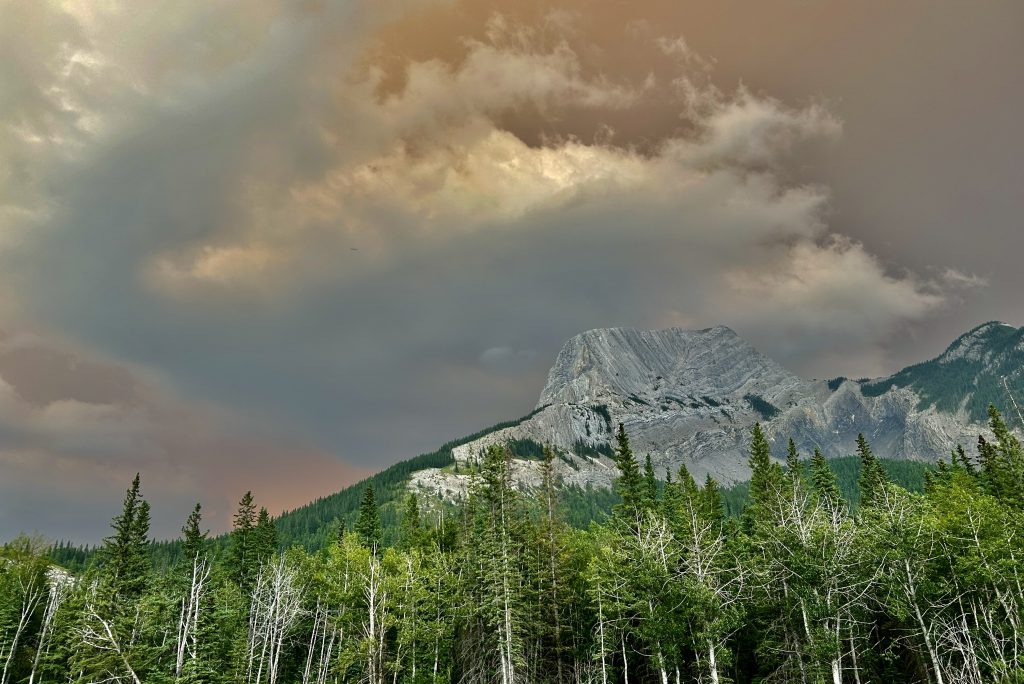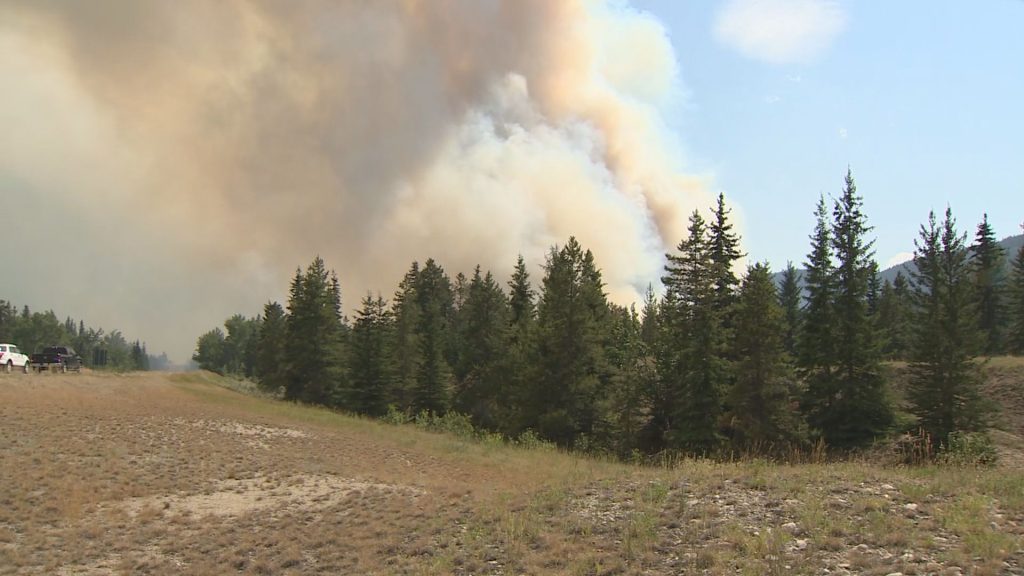Heat warning: Edmonton breaking temperature records, contributing to fire risk
Posted May 3, 2023 12:42 pm.
Last Updated May 8, 2023 10:36 am.
Edmonton is dealing with record-breaking heat well above seasonal averages.
Wednesday and Thursday have forecasted highs of 30 and 31 degrees Celsius, with overnight lows near 14 C.
It’s led Environment Canada to issue a heat warning for Edmonton, its surrounding areas and northeastern Alberta.
“We are setting records, so I wouldn’t say it’s normal,” said Environment Canada meteorologist Jesse Wagar. “Our normal temperatures are usually around that 16-, 17-, or 18-degree mark and we are certainly above that.”
Wagar says the previous warmest day of the year so far was Monday at 29 C – a record for May 1.
“Today with our forecast high of 31 degrees Celsius, our record is 30 degrees back in 2016, so we are likely to break the record today,” she said. “Similar for tomorrow, the forecast is 30 degrees, the record was 28.8 degrees set back in 2016.
“So I think we’re pretty safe to say that the records will likely be broken today and tomorrow.”
Environment Canada is suggesting Edmontonians reschedule outdoor activities to later in the day, take frequent breaks from the heat, and drink water and other non-alcoholic, non-caffeinated beverages.
Residents are being warned to monitor for symptoms of heat stroke or heat exhaustion.
MORE ON ALBERTA FIRES:
- Wildfires west of Edmonton: evacuation order lifted for Evansburg, Entwistle
- No coal BBQs, fireworks: Edmonton under fire ban
- Edmonton police urge caution along Wayne Gretzky Drive due to wildfire smoke
- Wildfires continue to grow around Edmonton as province remains dry
- Grass fires west, northwest of Edmonton force evacuation of communities
Temperatures are expected to cool down by the weekend. “Cooler temperatures, and perhaps some rain showers,” said Wagar. “But cooler is just cooler than 30.”
Wagar says the heat – and the conditions that have led to it – are to blame for the spread of numerous grass and brush fires in central Alberta.
“With this very warm, very dry, very stagnant and windy flow pattern, that really is the trifecta of the heightened fire risk, so I think it’s no surprise to see the fires we’ve had so far,” she said. “Hopefully the incoming rain will help the situation in that respect a little bit, but at this time it doesn’t look like a full, heavy, multi-day rain period, but really at this point any rain will be helpful.”
Is Edmonton at fire risk?
Edmonton fire fighters spent time this week putting out grass and brush fires around the city, like the one that shut down the Henday for part of Monday afternoon.
A fire ban was implemented Tuesday prohibiting open burning, fireworks, backyard fire pits and cooking stoves and BBQs that use fuels like wood and briquettes. The ban is in effect “until further notice.”
WATCH: Efforts underway to protect Hamlet of Wildwood from out-of-control wildfire west of Edmonton
“It is unprecedented,” said Jen Beverly, a University of Alberta professor specializing in wildland fire science and management. “I’ve never seen this in my 20 years in the city, this number of fires popping up with this intensity.”
Seven years since Fort McMurray wildfires
Beverly says the conditions were similar in 2016 when a devastating wildfire ravaged Fort McMurray.
But Edomnton’s fire chief would not say the city’s at risk of such a massive fire like that one seven years ago.
“It really does depend on where the fire starts, where the wind direction is, what direction it takes the fire in, and in relation to the proximity of the properties that border that area,” said Chief David Lazenby. “But it’s all speculation and I don’t want to unduly worry anyone.”
Acting Fire Chief David Lazenby with EFRS will be speaking shortly about the current fire risk in Edmonton pic.twitter.com/4cGKsAAWnD
— Laura Krause (@LauraKrauseNews) May 2, 2023
Beverly says spring fires are mostly caused by people.
“The lightning season really doesn’t get into full force until June, July, so those spring fires are preventable,” she said.
Those who clean up after fires are warning people in cities to be prepared.
“People who live in the north and remote communities are good at being prepared because they have to be,” said Jim Mandeville with First Onsite. “Those of us who live in the city, not very good at all.”
WATCH: Wildfires continue to grow around Edmonton as province remains dry
Mandeville was on the ground in Fort McMurray in 2016 assisting first responders.
He says residents of the Prairies always need to be concerned about wildfire threats.
“We had a big one in Saskatchewan last year that ran for 20-something kilometres across grass basically,” he recalled. “When things get that dry, they’ll burn.”








